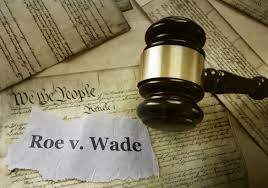On Friday, June 24, an extremist majority of the U.S. Supreme Court overruled more than 50 years of legal precedent, taking away a previously recognized fundamental right for the first time in the court's history. In doing so, it unleashed the full force of a regressive, coordinated state-by -state attack on the already perilously eroded right to access an abortion, on women's rights, the human right to bodily autonomy, privacy, and control over our own lives and dignity, and to life-saving healthcare and freedoms.
We are not sounding a new alarm. The nation's 140
million poor and low-income people, including 74 million women and girls, have
been declaring this emergency in the face of an all-out-attack in courts and
extremist legislatures across this country, particularly in the South.
The
immediate and long-term impact of this decision in Dobbs v.
Jackson will be disproportionately felt by poor women, women
of color, transgender, and gender non-confirming people, all of whom already
face increased healthcare disparities and economic insecurity. In over 20
states today, women have lost or are likely to lose the right to control their
bodies and reproductive health.
In 13 states, abortion will be banned within 30
days, as "trigger bans" designed to take effect as soon as Roe was overturned are already in place [1]. In
five states, courts have recently struck down legislation banning abortion; the Dobbs' decision means that legislation will
likely take effect in mere weeks or months [2]. In another 10 states, the Washington Post has declared that "the fate of
abortion rights remains uncertain" [3].
Even
before this decision, states with more restrictive abortion laws had higher maternal mortality and
infant mortality rates. Without adequate and universal healthcare available to
all women, we can expect these disparities to climb even higher: experts are predicting at least a 21%
increase in pregnancy-related deaths.
Once
again, poor and low-income women, especially in the South and in states that
did not expand Medicaid, raise the minimum wage, or otherwise enact laws and
policies that ensure we can thrive outside the womb, will be hit first and
worst by this decision.
We
understand Dobbs to be a
watershed attack. It will come to be known as an infamous consolidation of an
unrelenting extremist assault on this country's gains for equality and justice.
Indeed, Justice Alito's comparison between Plessy v.
Ferguson and Roe v.
Wade is an audacious abomination of this country's legal
history.
While Plessy was
a racist restriction of the rights we are entitled to, Roe was an historic expansion of those rights.
The parallel historical legal precedent to Dobbs is Dred Scott v. Sanford, which asserted that slaves born
in this country had no rights that white men—and white supremacist systems of
power—were bound to respect. This is the situation facing poor and low-income
women, who account for most of the people who will be impacted by restrictions
on abortion access, and will thereby suffer its most grievous
consequences.
Let
us be clear, however, that the impact of Dobbs is
not limited to these women or anyone whose health, security, and privacy are at
greater risk because of this decision. They are just the frontlines of a
broad-based assault on privacy that will impact how and when we decide to have
children, who we can be in a relationship with and marry, how we raise our
children, and how we die.
Until this is rectified, the legal justification for
our ability to have a stake in these life and death decisions no longer exists.
It also means that the legal basis for protections from government or corporate
intrusions on our privacy through surveillance, data mining, and making our
private information public is also gone.
In
fact, Dobbs puts at risk any rights that were not
already in place more than 150 years ago when the 14th Amendment was ratified.
The ultimate consequences of the court's decision to break from settled
jurisprudence, the commands of the U.S. Constitution, and all legal norms
reveal again an emergency in the highest court and federal recognition of equal
protection under the law.
When the Supreme Court directs people to elected
officials to protect constitutional rights, while gutting and spitting on the
right to vote through an unrelenting attack on the Voting Rights Act, our
democracy is in acute crisis.
This decision—in concert with a host of inconsistent,
constitutionally indefensible, and regressive jurisprudence from the Court
targeting voting rights protections, our safety from gun violence, the rights
of immigrants, housing, public health, and protections from police violence and
the coercive power of the criminal legal system—further confirms what the Poor
People's Campaign has already declared: the current U.S. Supreme Court is not a
constitutionally legitimate body.
Instead,
the majority of this court is wielding authority stolen from the American
people to implement an extremist political agenda that lies outside the
Constitution. If the Supreme Court were truly concerned about the rights of
people, it would use the full power of its position to make determinations
required by our Constitution to protect against the rolling coup against
democracy that has been gaining momentum across the country—unchecked by the
courts or significant congressional action to guard against electoral
subversion, voter suppression, and insurrection. The evidence before the
American people today demonstrates that this Supreme Court, as it stands,
appears to be in the opposite posture: captured by the same forces seeking to
maneuver and erode the institutions of democracy.
We
also know that while the Supreme Court has great power, it is not the only
power. We, too, have a power that can and will rise to this moment. Ours is the
power of unity, forged across these attacks and lines of divisions, against the
power structures, systems, laws, and policies that make life unlivable for 140
million people.
Just
days ago, thousands upon thousands of people converged in our nation's capital
for the Mass Poor
People's and Low-Wage Workers' Assembly and Moral March on Washington and
to the Polls. Hundreds of national organizations, labor unions, and faith
denominations joined thousands of poor and low-income people, together under
the broad banner of the Poor People's Campaign.
Our response to this moment is to
organize ourselves into a compelling force that will build the power to realize
the rights and dignity of absolutely everybody. We will mobilize the most
massive voter turnout among poor and low-income people in the history of the
nation. We must vote in historic numbers for our ancestors, for our children,
and for the generations to come. We must ensure that extremist members of
Congress, in both houses, remain in the voting minority.
Alongside
this historic effort, we call on Congress to expeditiously and absolutely end
the filibuster and take legislative action immediately to codify Roe v. Wade, ensure universal, single-payer
healthcare, including the expansion of Medicaid in every state, and ensure the
full protections of the Voting Rights Act in every election. We call on
President Biden to take immediate action to guarantee reproductive freedoms and
use the power of his executive authorities to unabashedly fight for the heart
and soul of this country, especially the 140 million poor and low-income
people.
As
Frederick Douglass said on the passage of the Dred Scott decision
in 1857: "In one point of view, we, the abolitionists and colored people,
should meet this decision, unlooked for and monstrous as it appears, in a
cheerful spirit. This very attempt to blot out forever the hopes of an enslaved
people may be one necessary link in the chain of events preparatory to the
downfall and complete overthrow of the whole slave system. The whole history of
the anti-slavery movement is studded with proof that all measures devised and
executed with a view to ally and diminish the anti-slavery agitation, have only
served to increase, intensify, and embolden that agitation."
This
is not the time to step back; it's time to step up! Forward together, not one
step back!
1.
The 13 states are Idaho, Utah, Wyoming, South Dakota, North Dakota, Missouri,
Texas, Oklahoma, Louisiana, Mississippi, Arkansas, Tennessee, and Kentucky.
2.
The five states are Alabama, Georgia, Iowa, Ohio, and South Carolina.
3.
Those 10 states are Montana, Arizona, Nebraska, Kansas, Wisconsin, Michigan,
Pennsylvania, Virginia, North Carolina, and Florida.
Rev. Dr. William J. Barber II is president and senior lecturer of
Repairers of the Breach, and co-chair of the Poor People's Campaign: A
National Call for Moral Revival. His books include: "The Third Reconstruction: How A Moral Movement is
Overcoming the Politics of Division and Fear"
(2016), "Revive Us Again: Vision and Action in
Moral Organizing" (2018) and "We Are
Called to Be a Movement" (2020). Follow him on Twitter
@RevDrBarber.
Rev. Dr. Liz Theoharis is
co-chair of the Poor People’s Campaign. She is the author of "Always with
Us?: What Jesus Really Said about the Poor" (2017).
Shailly Gupta Barnes is
the Policy Director of the Poor People’s
Campaign and the Kairos Center.
from Common Dreams






